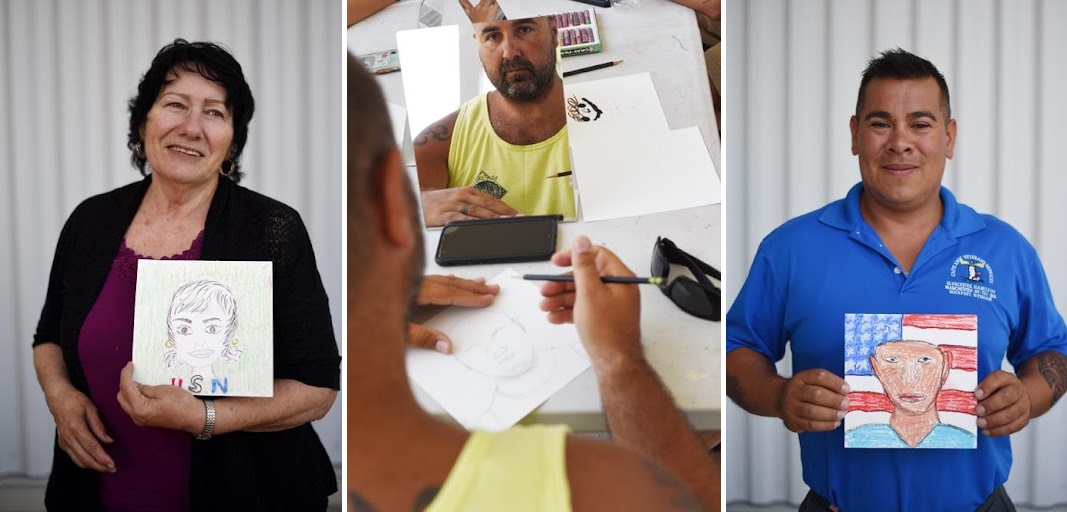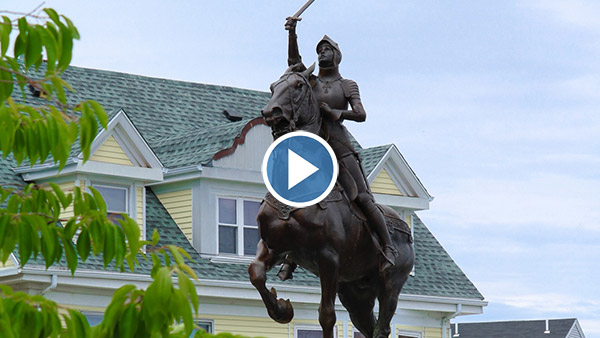
Virginia Lee Burton Demetrios (1909-1968), Detail of Give Your Blood, They are Giving Theirs (Sketch for Blood Donation Poster), 1944, watercolor on cardboard. Collection of the Cape Ann Museum, Gloucester, MA. [Acc. #2022.032.04].

Dear Friends,
This Memorial Day weekend we reflect on the ultimate sacrifices made by those who served in the armed forces. Over the centuries Cape Ann has supplied its share of service members and this issue of CAM Connects pays tribute to defense of freedom. There are statues here to commemorate them, and statues here by them. For instance, did you know that the famed Cape Ann sculptor Walker Hancock was one of the real-life Monuments Men in World War II? Read about him in this issue.
Memorial Day is the traditional start to summer, and CAM is getting set to welcome you at both of our locations. June 11 is opening day for CAM Green with an exhibition of handmade quilts by long-time Gloucester resident Doris Prouty called In Her Mind's Eye. CAM is hosting Gloucester's Juneteenth Celebration on June 19th, and later in the summer we have an exhibition by Tim Ferguson Sauder entitled Americans Flags. CAM Green will be open this summer each week Friday through Sunday at no charge.
So enjoy this start to summer by savoring the patriotism of Cape Ann residents and come visit us at both our locations to learn more.
With all best wishes,

Oliver Barker, Director

Caroline Armington, American Field Service Headquarters, Rue Raynouard Paris. Collection of the Cape Ann Museum Library & Archives, Gloucester, MA. Gift of Robert and Ann DeMaine, 2018 [Acc. #2018.24].

(Left to right) George Stout, Sgt. Traverse, Walker Hancock, and Steven Kovalvak during the excavation of Bernterode, Germany in May 1945. Stout, Hancock, and Kovalvak were part of the group known as the Monuments Men. From the Walker Hancock Papers, 1911-1995. Courtesy of the Archives of American Art, Smithsonian Institution.

(Left) Navy veteran Jo Ann Sanfilippo holds her self-portrait.
(Center) Army veteran and Gloucester police Patrolman Brendan Chipperini looks at himself in a mirror as he draws himself.
(Right) Cape Ann Veterans Services Director Adam Curcuru holds his self-portrait. Photographs by Paul Bilodeau, 2021. Images courtesy of the Gloucester Daily Times.



